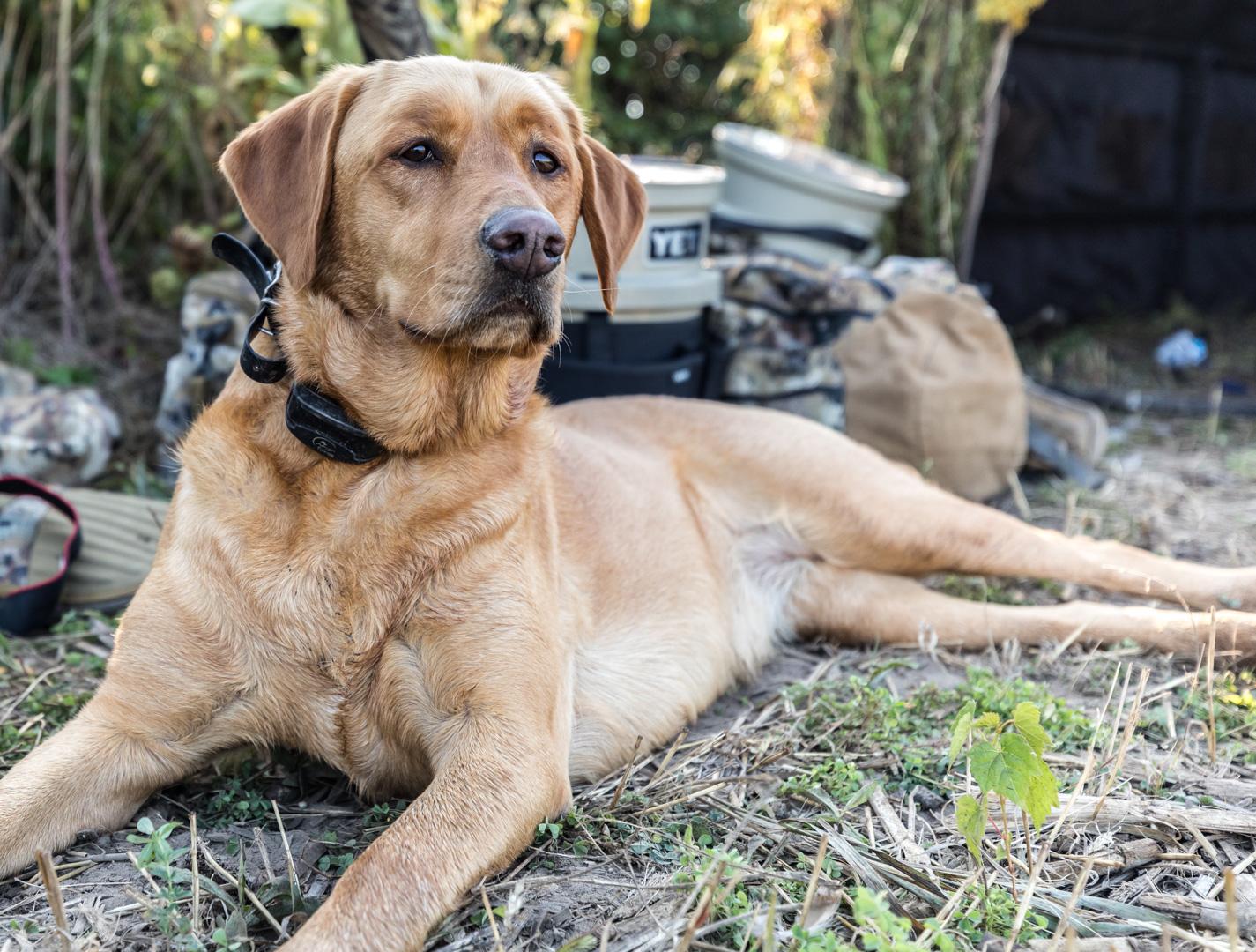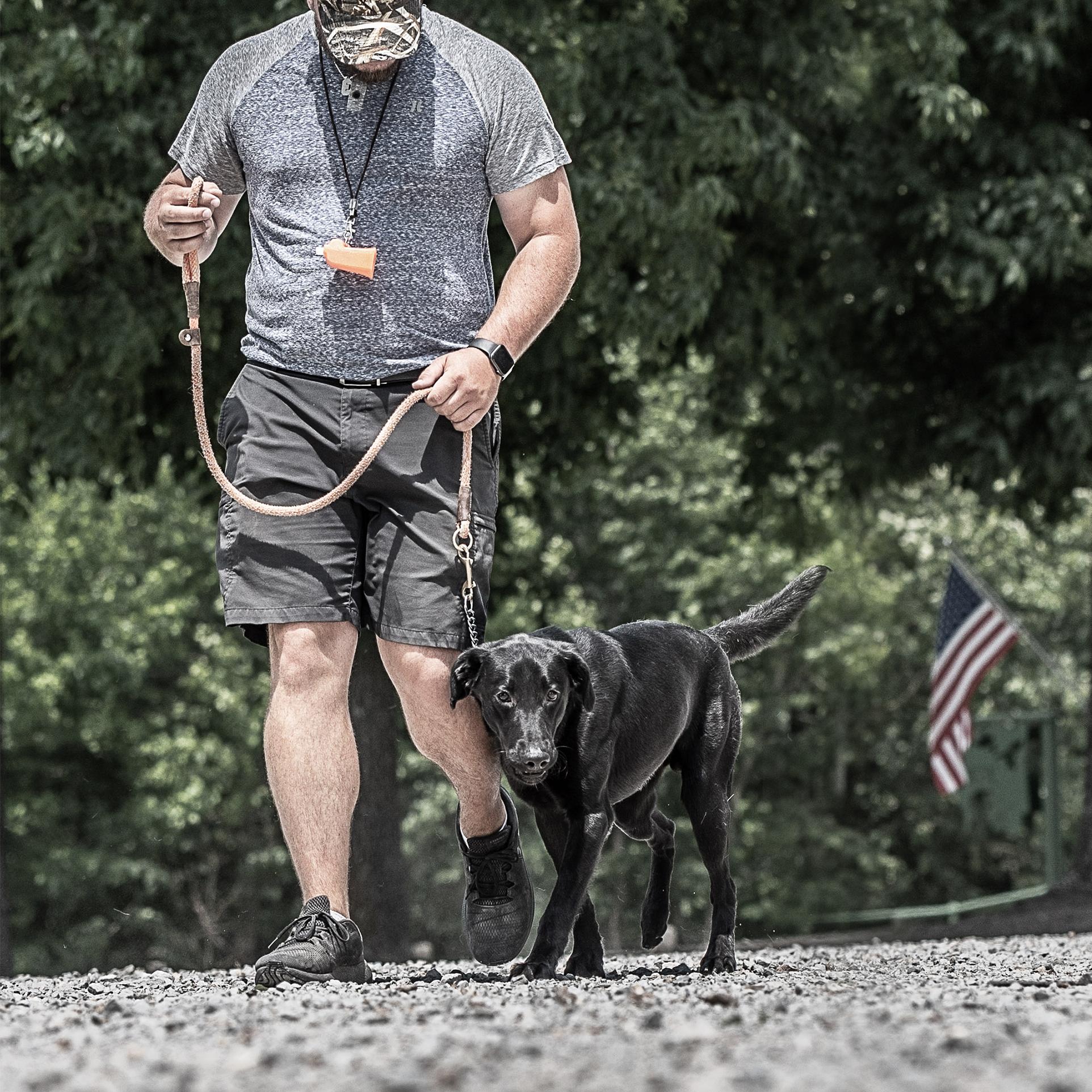
Teaching the Down Command
Posted by Gary ShefferDown, sometimes referred to as the Down Stay command, is a Strong Control Command. Down is an essential Command for all types of working and non-working dogs. The command can be used in a boat, blind, or field. I find it very useful after the hunt, to check the dog for injuries or removing burrs. The following is an in-depth overview of the Down command. Also, check out Tom Dokken's video below for a visual guide to teaching the down command.
The correct position for the Down or Down Stay is for the dog to be flat on the ground with the dog’s head between the front legs. The dog should remain still and not be allowed to move. Your dog should already be trained to sit and walk at the heel on the leash. I find a training table to be very useful in teaching the command. Other required equipment you need is a training collar, short leash, check cord, whistle, heel stick, and a SportDOG® E-Collar.
While the dog is on a short leash, drop the leash beside the dog. With your left hand, press down on the back of the dogs neck. With your right
hand lift the front legs and forward and give the command “down”. If the dog attempts to raise his rear, prevent this by pressing down on the lower back region with one hand while holding down the head with the other hand. Keep the dog in this position for 30 seconds. Calmly praise the dog but don’t over excite your dog. The dog should remain flat on the ground. Repeat the down command with every correction. The dog will learn that no pressure is applied as long as he remains in the down position.
After the dog has remained in the down position for a short time, give the “come” command and with the short leash walk the dog at heel. The “come” command should be given to release the dog from down every time. Repeat these steps several times or until the dog remains down without correction from the handler. Eventually the handler can remove his hands from the dog and stand over the dog.
Here is when the e-collar can be incorporated. Always consult your SportDOG manual or SportDOG directly if you have any questions concerning the use of your collar. The e- collar can be placed on the dog’s neck in a reverse manner. The unit should be placed on the back of dog’s neck. Always use the lightest correction to get the desired effect. By reversing the collar, the stimulus is felt on the back of the neck. This replaces the tap of the stick or the force of the handler.
The dog now must go “down” on the command and not be forcibly be placed. With the dog sitting at heel, run the long leash from the dog’s collar under the handlers left foot and hold in the left hand. With the stick in your right hand give the “down” command. Raise your right hand vertically as a visual signal to the dog.
At the same time sharply pull the leash upward pulling the dog to the ground. If the dog tries to get up, quickly correct the dog with the stick. Here the e-collar again can be useful. A second handler may be needed to operate the collar. Handler #1 has his hands full with the leash and stick. If the dog resists the upward yank on the leash, an immediate correction with the E-Collar to the back of the neck replaces the tap of the stick. This is a valuable transition to the dog off leash and at a distance.
When the dog has mastered the “down” command on the leash it is time to teach him the “down” at a distance. With the dog on the check cord, in an enclosed garage or fenced yard. Drop the leash and allow the dog to be several yards from the handler. When the dog is not excepting it, give the command “down��” and raise your right arm vertical. The dog should obey the command immediately. If the dog fails to obey the command after correction, as in all aspects of training go a step backward and repeat the training until the dog has mastered the step.
Take your time training the “down” command; always remember the dog must understand what you want it to do. Always quickly correct any refusal or mistakes made by the dog if it fails to correctly perform the command “down”. Again praise the dog when the dog does well, but do not over praise and excite the dog. The dog must obey the command “down” every time without hesitation.
Good luck training and happy hunting,
About Gary
Gary Sheffer has been hunting upland game for 15 years. Training Labs and German shorthairs for upland hunting is my specialty. Whether hunting pheasant or quail in Indiana, it is a great feeling to see a dog that I’ve trained point a bird and then retrieve it.

Gary Sheffer
Monticello, IN
Gary has been hunting upland game for 15 years. Training Labs and German shorthairs for upland hunting is his specialty. Whether hunting pheasant or quail in Indiana, it is a great feeling to see a dog that he has trained point a bird and then retrieve it.
Related Products
Related Articles

Teaching Your Dog the Down Command - Video
by The SportDOG Staff
SportDOG Basic Training DVD Chapter 7: SportDOG Brand Senior Pro Staffer Tom Dokken walks you through the steps of teaching your dog the down command using an electronic dog training collar. This command is critical to hunting dogs and dogs alike.

Teach Your Dog the Come/Here Command - Video
by The SportDOG Staff
SportDOG Basic Training DVD Chapter 6: SportDOG Brand Senior Pro Staffer Tom Dokken gives tips on the Come/Here command. This is a crucial command in any dog training regiment.

How to Teach Your Dog the Heel Command - Video
by The SportDOG Staff
SportDOG Basic Training DVD Chapter 2: SportDOG Senior Pro Staffer Tom Dokken walks you through teaching your hunting dog the "heel" command and using a remote training collar as reinforcement.


